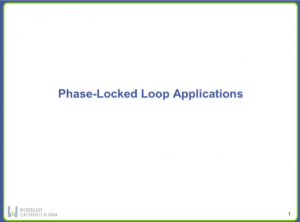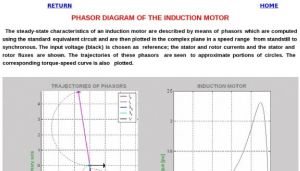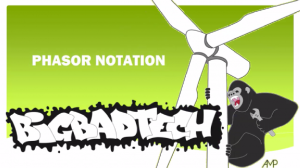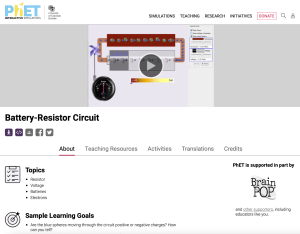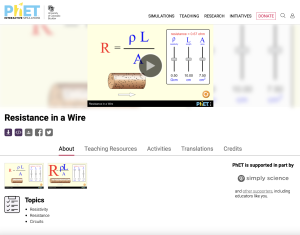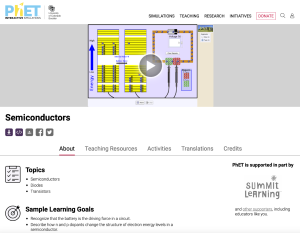Browse Resources
Engineering Technologies -- Electronics and controls
Resources | |
|---|---|
Description:
This learning module is provided by Work-Ready Electronics and covers phase-locked loops. Work-Ready Electronics modules are intended to be used either independently or integrated with current electronics curricula in college programs. This module is divided into three sections:...
This interactive presentation, created by Terry Bartelt for the Electromechanical Digital Library, discusses phase splitting in single-phase motors. Bartelt begins with a discussion of the sine waves that starts this process. After this important introduction, the author allows the student to...
This animation, created by Mahmoud Riaz of the University of Minnesota, presents an example in motion of an induction motor. As Riaz writes, "The steady-state characteristics of an induction motor are described by means of phasors, which are computed using the standard equivalent circuit and are...
This video, provided by Columbia Gorge Community College, is the first part of a two part lecture that discusses phasor notation. The main objective of this lecture is to "learn to represent time variant sinusoidal electrical phenomenon as phasor equivalents." This video runs 16:51 minutes in...
This video, provided by Columbia Gorge Community College, is the second part of a two part lecture that discusses phasor notation. The main objective of this lecture is to "learn to represent time variant sinusoidal electrical phenomenon as phasor equivalents." This video runs 18:34 minutes in...
Look inside a resistor to see how it works. Increase the battery voltage to make more electrons flow though the resistor. Increase the resistance to block the flow of electrons. Watch the current and resistor temperature change. This simulation of a battery-resistor circuit is from the physics...
Circuit Construction Kit adds capacitors, inductors and AC voltage sources to your toolbox! Now you can graph the current and voltage as a function of time.This simulation of a Circuit Construction Kit(AC+DC)is from the Physics Education Technology website of University of Colorado. Included are...
Learn about the physics of resistance in a wire. Change its resistivity, length, and area to see how they affect the wire's resistance. The sizes of the symbols in the equation change along with the diagram of a wire.This simulation of a Resistance in a Wire is from the Physics Education Technology...
The interactive resource, presented by the University of Colorado, Boulder, presents a demonstration how a doped semiconductor to create a diode or transistor. Watch the electrons change position and energy. This interactive simulation has a teacher's guide and an ideas and activities section.
Why do the lights turn on in a room as soon as you flip a switch? Flip the switch and electrons slowly creep along a wire. The light turns on when the signal reaches it. This simulation of a Signal Circuit is from the Physics Education Technology website of University of Colorado. Included are links...
| |
| ← Previous | Next → |
